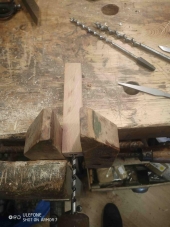Hey, replying to the post above:
I am not from your area but it sounds like you are trying to keep deer out of your orchard.
You might want to look into 'hedge laying', this is a technique where you partly cut the base of a hawthorn (in Europe) and bend it to 'lay' it.
e.g.
https://www.youtube.com/watch?v=WoprVhpOKIk
This is also the movie that was shown in the workshop I followed. As you can see, the guy is also a bit more experienced in life, so I am sure this is something you would be able to do.
There are many more ways to do it and it seems every place had its own style. It is a lot of fun and is a bit like coppicing but you do not cut the branches completely so the brances continue to live and make new vertical shoots that fill in the hedge. We used hatchets and pruning shears to cut away the dead branches and brambles etc so no need for the fancy billhook and stuff.
If done right and with the right plant (you might find a local variety that stands this sort of abuse and has thorns? Edit: just looked up osage orange, seems like a really interesting plant and a good candidate for the above technique, anybody has some experience 'laying' osage orange? ), this gives a very sturdy hedge that will stop cows and even cars after a few years.
This was the preferred method in the UK before the invention of barbed wire. It seems from paintings and old pictures that in Belgium and the Netherlands the preferred way of making a fence was using willow brances, which is another use I forgot to mention in my previous post.
Hope this gives you some inspiration!











